Helicopters have played a crucial role in both war and peace since their widespread deployment in the 1940s and 1950s. Helicopters are at the heart of everything, whether it's casualty evacuation, troop transport, disaster relief, or airborne fire support. Helicopter technology has gotten so far along that it is now possible to make hybrid helicopters, advanced attack helicopters, and super heavy transports.
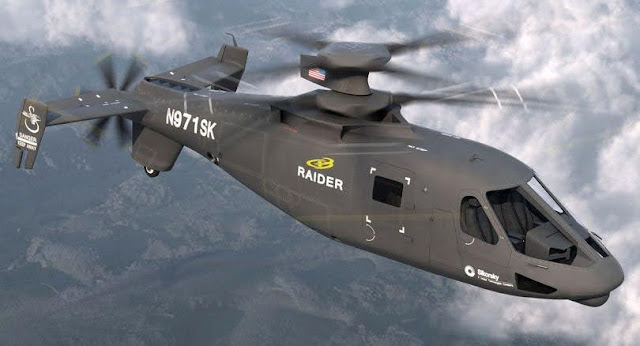
|
| US Army Sikorsky S-97 Raider |
Even though many Western countries have their own helicopter programs, the US and Russia continue to have the largest fleets of helicopters on the market. The following is a list of some of the most notable American helicopter makes and models that have contributed to the helicopter revolution. This article is the first in a three-part series that will also discuss the best helicopters used by the Russian military and the European military. The list is time-stamped from the first flight's year onward. To meet these magnificent creatures with rotary wings, please buckle up and settle in.
1. Bell UH-1 Huey (1956)

Bell UH-1 Huey

The UH-1 was a simple and useful design for a helicopter. Its exploits in the
Vietnam War made it famous, and its name has become almost a synonym for
technology. It was cheap, durable, and exactly what the US Army needed to
transport thousands of soldiers through the thick jungles of North Vietnam.
The UH-1, which relied on a single engine, could transport 10–14 soldiers into
battle. Each door was equipped with an M60 machine gun that was operated by a
gunner. The crew were issued armored seats and body armor to keep them safe
from enemy fire during high-risk missions.
The Huey was also very important for getting wounded people from the front
lines to field hospitals. It might only take an hour or two to complete. As a
result, American casualties were significantly reduced as wartime injuries
were treated promptly. The United States Marine Corps continues to rely on
these adaptable aircraft, despite having produced more than sixteen thousand
of them in the UH-1Y variant.
2. Sikorsky SH-3 Sea King (1959)

Sikorsky SH-3 Sea King

In the early years of the Cold War, the United States Navy had a serious
issue. With over 200 submarines in service, monitoring the Soviet Union's sub
fleet became a major headache. The Sea King, which made its maiden flight in
1959, was designed to address this issue. It was massive by today's standards,
but it was the first naval helicopter to feature turboshaft engines and an
amphibious design that allowed it to land on water. It could do its main job
of hunting submarines if it had a dipping sonar, a lot of sonobuoys, a
magnetic anomaly detector, depth charges, and torpedoes.
It was the most effective and widely used anti-submarine warfare (ASW) because
it could fight submarines from a long distance and had a wide range of
attachments.
One of the coolest things about the Sea King is that it can bring space
capsules back from orbit. The US Navy Sea King was in charge of getting the
capsules back from the ocean after they landed there after a space mission.
Apart from anti-submarine warfare, the Sea King plays another major role, and
it's a pretty cool one. From the early 1960s until the present day, this
helicopter has been used exclusively to transport the President of the United
States of America. When carrying the president, a USMC Sea King is called
"Marine One," and it acts as a mobile office with advanced electronic
countermeasures and an armored airframe.
Japan, Italy, and the United Kingdom were granted licenses to produce the Sea
King, which they then served domestically and exported to other friendly
nations. One of the most unusual changes to the Sea King is the Airborne Early
Warning Variant. It was made by the United Kingdom after they were embarrassed
in the Falklands. Despite being replaced by the Seahawk and retired by the US
Navy, the Sea King is still in use by the navies of Brazil, India, Spain,
Iran, and Italy.
3. Boeing CH-47 Chinook (1961)
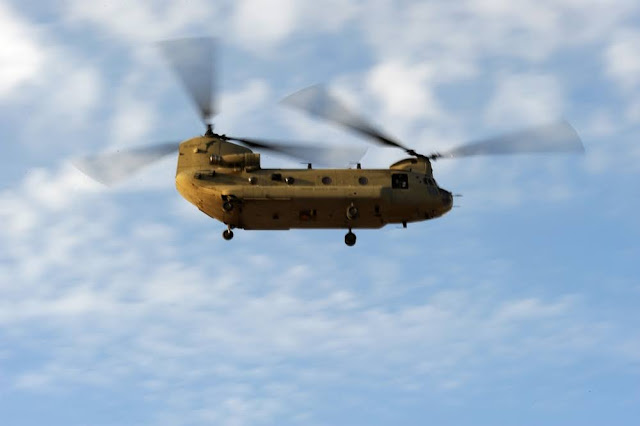
Boeing CH-47 Chinook

Another instance of a helicopter with its origins in Vietnam and a
contemporary incarnation The CH-47 Chinook makes the most of the power from
its engines to lift itself. This is made possible by its innovative tandem
rotor design. Since there is no tail rotor, the full force of the engine goes
to both main rotors, which spin in different directions and at different
heights. Because of this, the Chinook can lift heavy loads into the air. The
Chinook is basically a big flying truck that can carry up to 24,000 pounds
(10,800 kilograms) underslung, 20,000 pounds (9000 kilograms) inside the
cabin, or 55 troops sitting inside.
The Chinook can do something called the "Delta Queen" maneuver, which is an
amazing way to get water out of a tight spot. The Chinook lands on the water's
surface, opens its back ramp door, and lets water flood in. This makes for a
smooth ride for a special forces boat, which is then lifted out of the water
and brought to land safely. The "pinnacle maneuver," which is unique to the
Chinook, involves dropping and picking up troops from a cliff or ledge with
only the helicopter's back wheels touching the ground. Even after its first
flight, in the year 2060, it is expected that this dependable heavy lifter
will still be in use.
4. Sikorsky S-64 Skycrane (1962)
_Sikorsky_S-64E_departing_Wagga_Wagga_Airport_(cropped).jpg)
Sikorsky S-64 Skycrane
_Sikorsky_S-64E_departing_Wagga_Wagga_Airport_(cropped).jpg)
Well, I guess no one ever thought they'd be able to make a flying crane. The
Sikorsky S-64 Skycrane was built with this very purpose in mind. This
strange-looking machine, which is mostly just a skeleton, can hide a huge
payload in what looks like a weak frame. In the space between its tall legs,
in the middle, there is a crane that can easily lift up to 25,000 pounds
(11,300 kilograms) of weight.
During the Vietnam War, the military version, called the CH-54 Tarhe, was used
to pick up more than 380 downed planes. When compared to alternative
approaches, this one saved millions of dollars. Tanks, trucks, and soldiers
were all transported using this route.
Another one-of-a-kind is used for transporting military pod containers that
could be changed into anything from operating rooms to communication
equipment.
The civilized version has installed power lines that stretch for thousands of
miles.
The helicopter's versatility was shown by the fact that it could put up
transmission towers on a wide range of surfaces. The fire department uses a
version that can hold up to 2650 gallons (10,000 liters) of water to put out
forest fires. This helicopter is often used in the logging industry, as well
as for many other things. You read that correctly. Because of its high lifting
capacity, the Skycrane is a good choice for moving logs from remote forests to
urban centers, where they can be further processed. There is currently nothing
else on the market like it, and it is still being manufactured.
5. Sikorsky's CH-53 Stallion (1964)
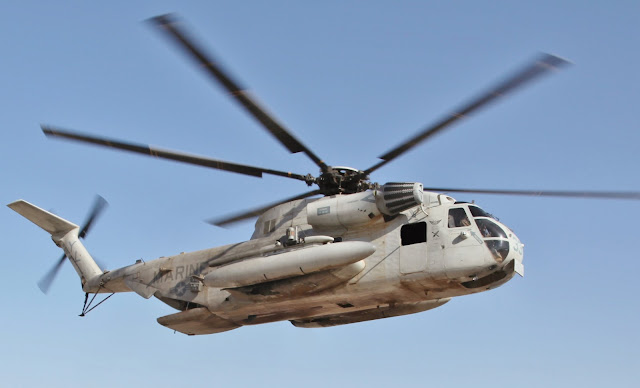
Sikorsky's CH-53 Stallion

U.S. military helicopters don't get much bigger than this. The first version
with two engines could carry more than 14,000 pounds (6,350 kilograms), which
is about the same as four fully grown rhinos. The US military uses this
helicopter to move troops, put in special forces, get injured people to
safety, and lift heavy vehicles like trucks. Due to its design as a marine
helicopter, the CH-53 can safely make an emergency landing on the water. The
earliest versions saw service in Vietnam, and the newest version is about to
go into production. Yet another example of how American helicopter designs
have stood the test of time.
As a minesweeper, it serves a purpose unlike any other vessel. The MH-53
variant with three powerful engines can haul 32,000 pounds (14,500 kilograms),
enough to pull a minesweeping sled across the ocean's surface. That makes the
helicopter more efficient and safer than a ship when it comes to sweeping
mines.
The most recent model, the triple-engined CH-53K King Stallion, has a payload
capacity of 35,000 pounds (15,800 kg), which is more than twice as much as the
original model. For many years to come, the US Marine Corps will rely on its
King Stallions as the foundation of its heavy lift capability.
6. Bell AH-1 Cobra (1965)

Bell AH-1 Cobra

The AH-1 grew out of the UH-1 to fill an immediate need for an armored
helicopter that could shoot guns, rockets, or missiles. An attack helicopter,
it was the first of its kind. It saw extensive combat use in Vietnam after
being rushed into service there. It is a very good aerial fire support
platform because it is small, has two seats, and moves quickly.
Cobras used to have 7.62 mm miniguns, 40 mm grenade launchers, and rockets.
This gave them the ability to kill targets hidden in the jungle's canopy.
Venomous cobras that could sneak up on the Vietcong and destroy everything in
their path would have been a terrifying prospect. Over the course of the
Vietnam War's four years, more than a thousand Cobras were manufactured due to
their proven usefulness. The AH-1Z Viper is an updated version of the AH-1
that is still used by the US Marine Corps.
7. Sikorsky UH-60 Blackhawk | SH-60/70 Seahawk (1974)
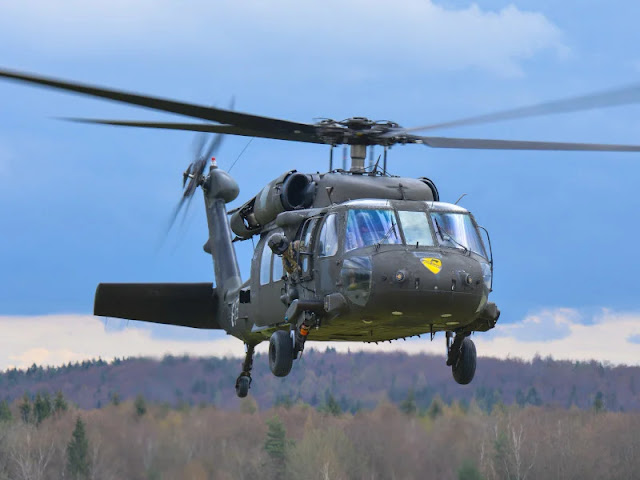
Sikorsky UH-60 Blackhawk

The Blackhawks replaced the Hueys, and their era began after the Huey's. It
was the UH-1 Huey that carried out the bulk of the US Army's tactical
transport duties. The Blackhawk is a state-of-the-art upgrade that is bigger,
shoots better, and has better technology. The Blackhawk entered service in
1979, but it wasn't until 1993, when two were shot down in an urban combat
environment in Mogadishu, Somalia, that the phrase "Black Hawk Down" became
widely used, even becoming the title of a movie about the incident. The UH-60
can carry up to 9000 pounds (4100 kg) externally slung under the aircraft, or
2600 pounds (1200 kg) internally. Twelve soldiers or six stretchers for
medical evacuation can fit in the cabin.
The Blackhawk is a very flexible helicopter. Over the years, dozens of
different versions have been made, including the famous "Stealth Hawk," which
led to the infamous "Operation Neptune Spear." The other major version is the
SH-60 Seahawk, which is the mainstay of the US Navy for anti-submarine,
anti-surface, transport, and search and rescue missions. Each aircraft carrier
and amphibious assault ship in the US Navy has a number of Seahawks.
Destroyers, on the other hand, usually only have two. The SH-60 can carry
torpedoes, anti-ship missiles, and depth charges, and it features a powerful
surface search radar, dipping sonar, and Sonobuoys. Both variants have been a
commercial success overseas, with over 20 countries now using them.
8. Boeing AH-64 Apache (1975)
.jpg)
Boeing AH-64 Apache
The Apache has been the workhorse of the US military's ground operations for
more than 30 years, and most people agree that it is the most advanced attack
helicopter in use today. It was created to take the place of the AH-1 and has
become standard issue for the US Army. The fuel tank of the Apache is
self-sealing, so it won't leak fuel if it's attacked, and its armor can take
hits from 23 mm anti-aircraft guns. .jpg)
The Apache is the most formidable task buster because it is equipped with sixteen Hellfire missiles. More than 5 miles away, there is no match for these high-tech missiles, which are guided by lasers. In addition, it can transport rocket pods for use against unarmored foes. Under the nose is a 30 mm cannon that can discharge 300 rounds per minute. Stinger missiles, which can be used with the Apache, greatly increase the amount of damage it can do. In the late 1990s, long-range radar was added to the Apache. This meant that it could now attack targets from behind cover, making itself less vulnerable to fire. So, the helicopter is a powerful weapon that can do a lot of damage on the battlefield.
9. Bell V-22 Osprey (1989)
.jpg)
Bell V-22 Osprey
The Osprey is like something out of a science fiction movie; it is the ultimate
transformer. Because the two propellers are next to each other, it looks like a
helicopter when it's taking off. Nothing out of the ordinary there, but the
magic begins just seconds after takeoff. As the rotor blades start to tilt
forward along with the wing, the helicopter suddenly changes into a
twin-propeller airplane. .jpg)
This transformer technology is not only nice to look at, but it also has many practical uses. Since this is the case, the US military has ordered hundreds of them and is using them in operations. When in airplane mode, the V-22 can fly twice as fast as a conventional helicopter. It helps a lot with putting in special forces and getting hurt soldiers back across dangerous territory.
10. Sikorsky S-97 Raider (2015)
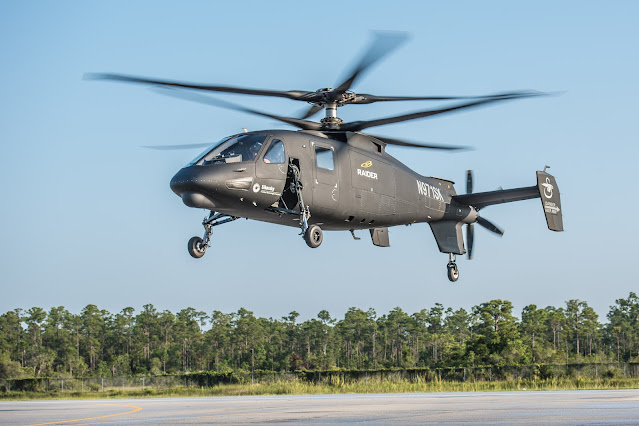
Sikorsky S-97 Raider

Even though the United States military doesn't use it right now, the amazing
Sikorsky S-97 raider should be included. The Raider was made because the US
Army thought it would need an armed aerial scout. It has many cutting-edge
technologies that give it a clear advantage in battle. The helicopter's pusher
propeller and coaxial rotor system are the most striking features. The latter
is typically found on Russian Kamov helicopters. This design is more energy
efficient than previous ones because it doesn't use the tail rotor to stop the
main rotor from turning. Coaxial rotors instead provide the necessary lift by
canceling out each other's torque, and a pusher propeller helps keep things in
the air.
Rocket pods can be stored in the Raider's wingtips, allowing it to provide
fire support for a squad of six. It can reach speeds of up to 444 kilometers
per hour, making it ideal for scouting or troop insertion missions in
dangerous environments. This helicopter was made for the US Special Forces
because of how fast and useful it is. Even if it is never used by the U.S.
military, its design will be improved and more helicopters like it will be
made in the years to come.

